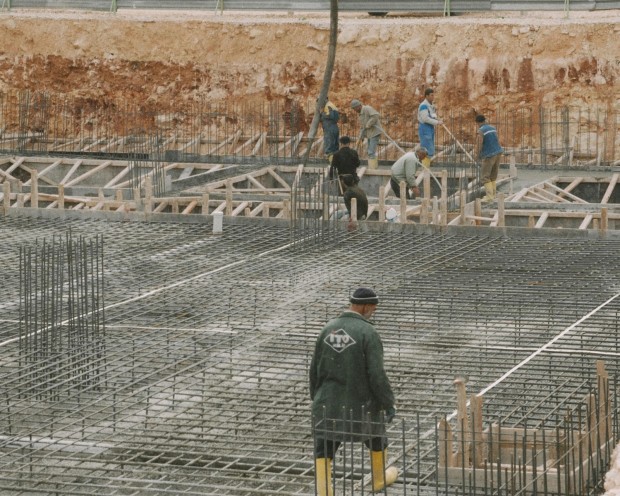Any construction's stability heavily depends on its foundation. As a result, several methods exist to place pile foundations to ensure a building's stability.

(Photo : Pexels/Mehmet Turgut Kirkgoz )
1. Continuous Flight Auger (CFA)
The CFA machinery consists of a mobile base carrier with a hollow-stemmed flying auger that can be turned into the ground to the right depth. Concrete is poured through the flight auger as the pile is subsequently withdrawn. Preventing soil collapse and ensuring that piles are formed correctly requires careful coordination between the drill's rotation and the concrete flow. When applied to soft ground conditions, CFA is especially successful. Additionally, it enables the placement of piles of varying diameters across a wide range of soil types.
2. Jetting
A technique known as jetting involves using water to facilitate the penetration of piles, most commonly in sand or sandy gravel. However, its effectiveness is restricted to clays that are more solid to stiff or soils that contain coarse pebbles, cobbles, or boulders.
3. Pile Driving by Vibrating
Vibration hammers, usually powered by electronic or hydraulic systems, utilize the contra-rotating eccentric masses within a housing linked to the pile head. In sandy or gravelly soil conditions, these hammers are particularly useful because the vibration they generate helps to break down the skin friction present on the sides of the pile.
Also Read: Partition Walls in Construction: Everything You Need to Know
4. Bored Piles
When substantial apertures are bored into the earth and subsequently filled with concrete, bored piles, which are alternatively referred to as replacement or drilled piles, are formed. It is ideal for supporting structures like bridges and flood protection with bored piles due to their high efficiency in transferring the burden above ground to the deeper rock and soil levels below with minimal settlement.
In the case of specific bored piles, the bottom of the hole is either expanded or under-reamed, forming a bulb at the end. Preceding the placement of the concrete or after its pouring, a steel reinforcement cage is plunged into the aperture. Nevertheless, different methods of bored pile construction might be used depending on the circumstances of the ground.
5. Driven Piles
One of the most common pile foundations types is driven piles. They can be built using lumber, a method that has been around for centuries and is currently utilized worldwide. Piling made of timber is mainly used in the United Kingdom for coastal construction, sea defense, and jetties. As mentioned, you could also use precast concrete piles, which are made to withstand driving stresses and generally come with a square or hexagonal section. By employing a designated area around the pile and compacting the soil, an equivalent volume of soil is displaced laterally into the soil, which improves the pile's load-bearing capacity.
6. Cast-in-Place Pile Foundations
In the casting-in-place process, instead of transporting precast piles to the construction site, laborers insert steel reinforcements through holes drilled in the ground and pour concrete into the openings. Because of this, they can adjust the foundation's depth to meet the project's requirements and use piles with a far smaller diameter than those utilized for driven pile foundations.
Related Article: Foundation Construction Techniques: 7 Tips For Every Builder and Contractor







